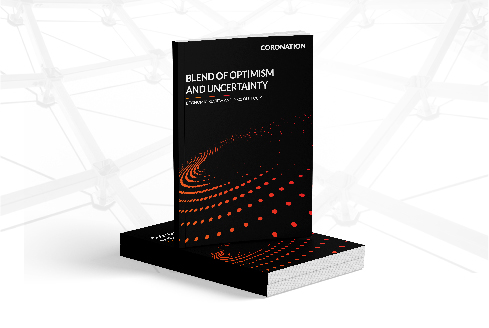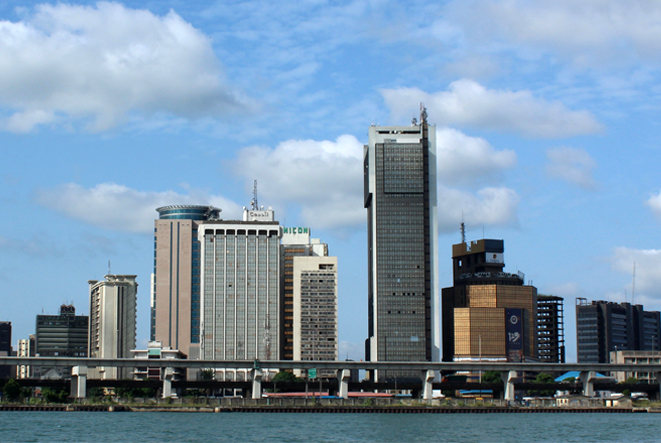
Credit and technology to transform farming sector
With Nigeria’s population set to reach 400 million by 2050, unlocking credit for the country’s small holder farmers currently contributing almost 30% of Nigeria’s GDP is the game-changer set to ensure Nigeria’s future food security. More credit to the agricultural sector will also expand employment and broaden economic inclusion. Leveraging credit through public-private partnerships will also ensure that the country’s farmers are able to access new technologies and build the cold-chain, distribution and export infrastructure necessary to ensure that agriculture contributes a much larger share of national revenue and foreign exchange earnings.
Access to finance, however, remains a challenge for the agriculture sector. Although there have been laudable interventions by the Central Bank of Nigeria and the Federal Government, the sector needs more investment and farmers more credit.
According to the National Bureau of Statistics, however, agricultural credit currently accounts for only 5.2% of total private sector credit.
There is a huge need for need for financial institutions to diversify products and services for players across the agricultural value chain if Nigeria is to boost profitability and increase income from the sector.
China provides the best example of how channeling investment into agriculture can provide the catalyst for broad economic growth – across the entire economy. What we now call the Chinese economic miracle was built on channeling credit and investment to, and focusing infrastructure development on, small holder farmers. This was largely achieved through public-private partnerships supported by favourable government policies.
Today in China, private agri-businesses have started promoting agricultural innovation and AgriTech solutions. For example, three years ago, Alibaba launched the ET Agricultural Brain program, leveraging big data to assist farmers plan their planting methods effectively and maximise crop yields. Industry sources suggest that, today, China ranks as the largest global producer of pork, wheat, rice, tea, cotton, and fish.
In Nigeria the Federal Government has been proactive with import substitution. The Anchor Borrowers’ Program (ABP), designed to create economic linkages between small holder farmers and agricultural processors and food producers, has, for example, been reasonably successful. The program provides loans to small holder farmers to boost agricultural production, create jobs and reduce food importing bills. Under the ABP it is estimated that the Central Bank of Nigeria disbursed N841.3bn to 3.9 million small holder farmers cultivating 4.9 million hectares across the country. The 2021 wet season alone saw N161.2bn released to 770,000 small holder farmers cultivating seven commodities on a combined 1.1 million hectares. A further N43.2bn was disbursed to support the cultivation of over 250,000 hectares of maize, sorghum, soya beans and rice during the 2021 dry season. In addition, the Central Bank of Nigeria’s maize reserve program has successfully moderated maize prices by targeting large feed mill producers directly.
Also worth highlighting is the Agri-business Small and Medium Enterprise Investment Scheme (AgSMEIS). This voluntary initiative lead by the bankers’ committee supports Federal Government’s efforts to build policies promoting agricultural businesses and small and medium enterprises as vehicles for sustainable economic development. Under the scheme, the Central Bank of Nigeria has disbursed N134.6bn to 37,571 agri-entrepreneurs.
Furthermore, in collaboration with the Federal Ministry of Agriculture and Water Resources, the Central Bank of Nigeria established the Commercial Agriculture Credit Scheme (CACS) in 2009 to help finance the country’s agricultural value chain. Between September and October 2021, N5.9bn had been disbursed to finance six large-scale agricultural projects under this scheme. Cumulatively the Central Bank of Nigeria has disbursed N864bn to 4.1 million farmers. In addition, the Central Bank of Nigeria has also disbursed N41.2bn to kick off the country’s ‘brown revolution’, a large-scale wheat program aimed at reducing Nigeria’s reliance on wheat imports by 35%.
In November 2021, the Central Bank of Nigeria also released new guidelines for participants and operating institutions under its Agricultural Credit Guarantee Scheme Fund. By issuing guarantees to commercial banks providing agricultural loans the scheme aims to increase private credit allocation to the agricultural sector. Other initiatives like Nigeria’s Incentive-Based Risk Sharing System for Agricultural Lending (NIRSAL), Agriculture Promotion Policy (APP), and the Nigeria–Africa Trade and Investment Promotion Program are also working to increase the contribution of agriculture to the Nigerian economy.
There has also been progress in select agricultural segments such as rice, fertiliser, fish and livestock.
With rice a staple in most Nigerian households and critical to food security, it is concerning that according to the United States Department of Agriculture milled rice production in Nigeria declined by 3% from 5 million metric tonnes (MMT) in 2019 to 4.9MMT in 2020. On a more positive note, the area harvested for rice expanded from 3.5 million harvested hectares in 2019 to 3.6 million harvested hectares in 2020. On the back of the ABP, there has also been an improvement in rice yield, from 4 metric tonnes (MT) to 10MT per hectare over the last year.
Nigeria has also recently increased the number of functional fertiliser blending plants to 47, up from 24 in 2019. Additionally, in June 2021, Dangote Industries Limited began producing urea fertilizer in Nigeria. There is currently an estimated 1MT annual demand for urea fertilizer in the local economy. With Dangote aiming to eventually produce 3MT each year, the company is expected to meet local demand while also fulfilling export orders.
While Nigeria’s total annual fish consumption is estimated at 3.4MMT, only 40% of this demand is met domestically. Each year the country spends a full N125bn (USD30.1m) importing fish. According to the NBS, while the fishing segment grew by 0.4% in the third quarter of 2021 compared with the same quarter in 2020, extensive opportunity for investment in aquaculture and fish production still exists in Nigeria.
More generally, Nigeria’s animal feed sector remains underdeveloped, largely due to high production costs. To put this in perspective, about 70% of the operational costs for poultry and aquaculture businesses are channeled towards securing feedstock. Again, this represents significant opportunity for targeted private sector investment and production-aligned credit extension.
To resolve bottlenecks in credit and investment and unlock the huge potential for growth, earnings and employment presented by Nigeria’s agricultural sector, it is critical that the private sector, especially banks, work closely with Nigeria’s legislators and government departments. Building a sustainable public-private partnership able to transform the agriculture sector and ensure long term food security is a national imperative. This will also diversify the country’s economy, increase foreign exchange revenue, boost overall GDP growth and promote social stability by including more Nigerians in the economy.








